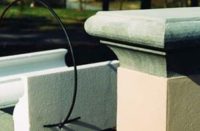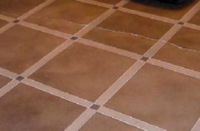Opened in 1913 with claims as the world’s largest concrete bridge, the Albertus L. Meyers Bridge in Allentown, Penn. underwent extensive rehabilitation highlighted by pier reconstruction using QUIKRETE® Shotcrete MS. Recommended and performed by Mar-Allen Concrete Products, Inc., the dry-process shotcrete application used to repair the piers improved the appearance, durability and overall structural integrity of the bridge while maintaining its status on the National Register of Historic Places.
Built with nearly 30,000 cubic yards of reinforced concrete in an open-spandrel arch design, the Albertus L. Meyers Bridge is nearly 1,800 feet long and 50 feet wide. During the past century, the bridge has received multiple improvements to ensure safe travel over the Little Lehigh Creek between Allentown’s Center City and South Side. The Pennsylvania Department of Transportation (PennDOT) enlisted IEW Construction Group for the latest rehabilitation, a $20 million initiative completed in 2016 that included a new bridge deck, alcoves, roadway approaches, lights, sidewalks, curbing, fences and signs.
Arguably the most challenging aspect of project was reconstructing the deteriorated concrete piers, which required ACI Certified Nozzlemen from Mar-Allen Concrete Products, Inc. to make 60 percent of the repairs overhead while elevated off the ground up to 120-feet, often in high winds. In addition, the QUIKRETE® Shotcrete MS was enhanced with a corrosion inhibitor and fibers to help meet strength and bond specifications, and it was customized to match the bridge’s original color as approved by the Pennsylvania Historic and Museum Commission.
Nearly 50,000 pounds of shotcrete was spray-applied over dampened repair areas prepared by removing unsound concrete with a pneumatic hammer, reinforcing usable rebar by grit blasting and replacing unsalvageable rebar. The repair depths ranged from three inches to four feet and galvanized mesh was installed for added support as necessary. A spray cure was applied to help prevent plastic shrinkage cracking as a final step in the process. Throughout the rehabilitation, large burlap curtains hung from cables covering the bridge to protect outside property from dust and to help manage the sun’s impact on the curing process.
The decision to use a dry-process shotcrete application rather than the initially specified form-and-pour approach saved time and money in preserving an historic landmark with decades of service life remaining. The Albertus L. Meyers Bridge rehabilitation earned honorable mention recognition in the 2017 American Shotcrete Association Outstanding Project Awards.
QUIKRETE® Shotcrete MS is a single component Micro Silica enhanced repair and restoration material that achieves a compressive strength of more than 9,000 PSI at 28 days, and features very low rebound and permeability characteristics. The QUIKRETE® Companies offers a full line of shotcrete products that can be applied through a wet or dry process to deliver the combination of high strength, high adhesion, low rebound and low sag. These characteristics make QUIKRETE® Shotcrete MS ideal for use in rehabilitating bridges, tunnels, parking garages, ramps, piers, dams and other concrete structures.
For more information on QUIKRETE® products and projects, visit www.quikrete.com.













